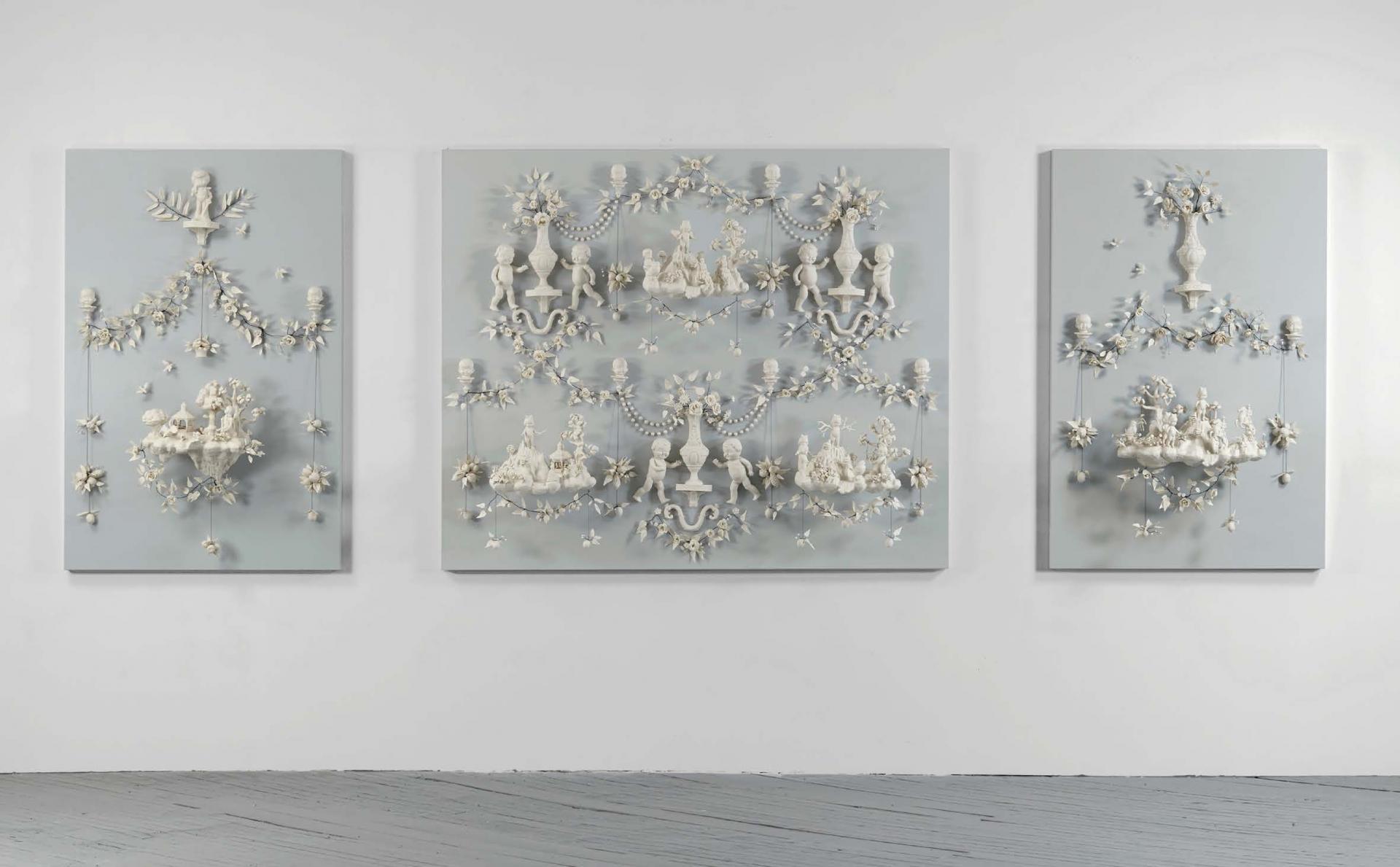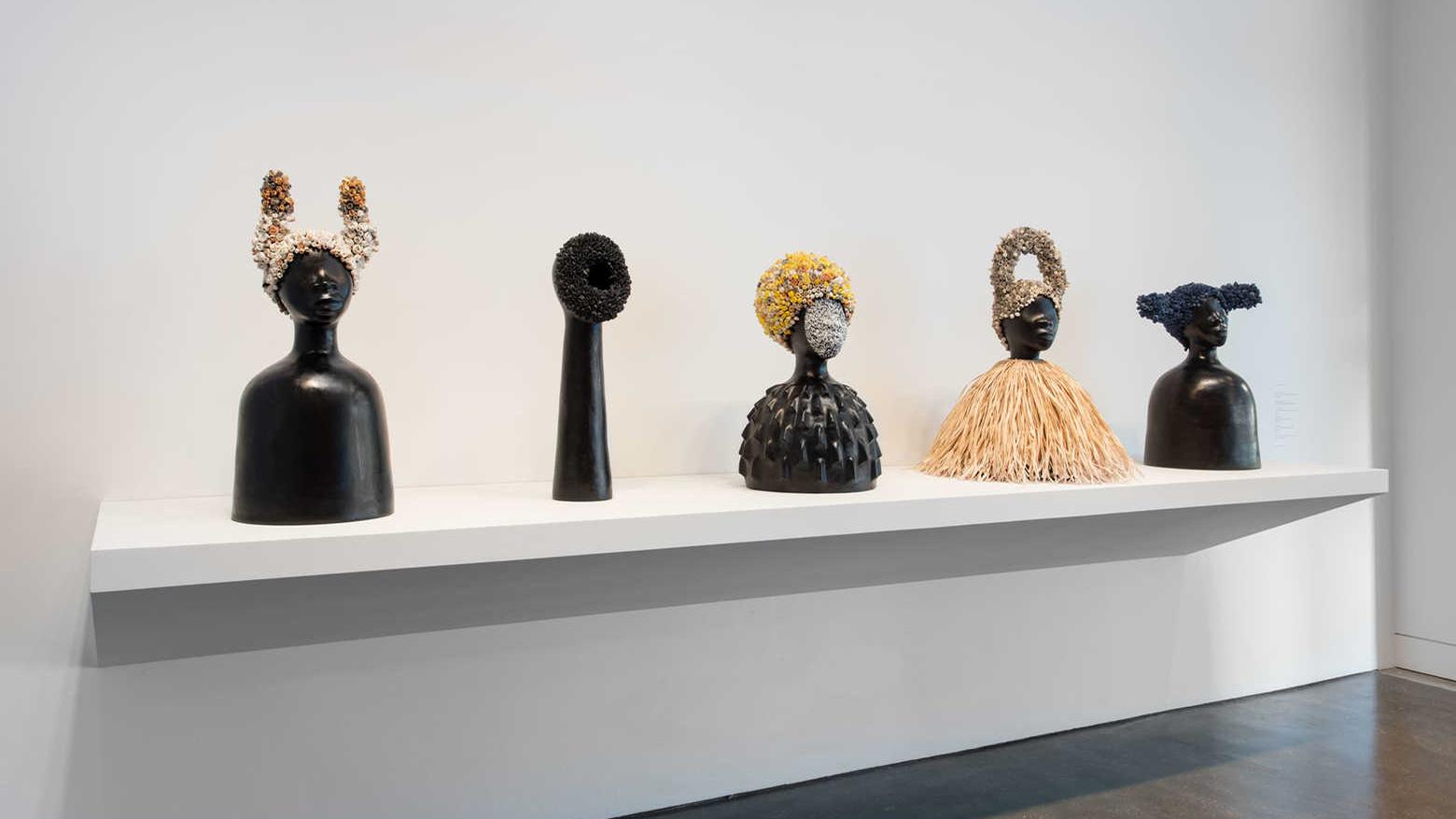Image

Raiding the Icebox
Raid the Icebox 1 with Andy Warhol
Nicole Eisenman’s presentation for Raid the Icebox Now3 is an exclusively curatorial project, allowing her to develop ideas and strategies through work by artists throughout history. Transforming a gallery space into the interior and exterior environs of an urban gay nightclub through wall treatments, deejayed dance music, furniture, and other decorative elements, her project repositions traditional works of American and European portraiture of past centuries to question legacies of power and inequality. Paintings featured in Eisenman’s presentation will include Joseph Badger’s Portrait of an Unknown Woman (1700), Rufus Hathaway’s Portrait of Seth Winsor (ca. 1798), Cecil Jay’s Portrait of George Hitchcock (1907), and William Jennys’s Portrait of Mrs. Israel Ashley (ca. 1800)—all characterized by a rigid formality that belies their social values and perspectives. The exhibition will not only provide a deeper appreciation of the manner in which art history informs Eisenman’s overall practice, but also suggests how political statements about specific issues and concerns are made through focused arrangements of museum collections.
Image

Video file
Warhol's early career was dedicated to commercial and advertising art, where his first commission had been to draw shoes for Glamour magazine in the late 1940s. In the 1950s, Warhol worked as a designer for shoe manufacturer Israel Miller. American photographer John Coplans recalled that Warhol's "whimsical" ink drawings of shoe advertisements figured in some of his earliest showings at the Bodley Gallery in New York.
Warhol was an early adopter of the silk screen printmaking process as a technique for making paintings. A young Warhol was taught silk screen printmaking techniques by Max Arthur Cohn at his graphic arts business in Manhattan.[23] While working in the shoe industry, Warhol developed his "blotted line" technique, applying ink to paper and then blotting the ink while still wet, which was akin to a printmaking process on the most rudimentary scale. His use of tracing paper and ink allowed him to repeat the basic image and also to create endless variations on the theme, a method that prefigures his 1960s silk-screen canvas.[21] In his book Popism: The Warhol Sixties, Warhol writes: "When you do something exactly wrong, you always turn up something."[24]
Warhol habitually used the expedient of tracing photographs projected with an epidiascope.[25] Using prints by Edward Wallowitch, his 'first boyfriend'[26] the photographs would undergo a subtle transformation during Warhol's often cursory tracing of contours and hatching of shadows. Warhol used Wallowitch's photograph Young Man Smoking a Cigarette (c.1956),[27] for a 1958 design for a book cover he submitted to Simon and Schuster for the Walter Ross pulp novel The Immortal, and later used others for his dollar bill series,[28][29] and for Big Campbell's Soup Can with Can Opener (Vegetable), of 1962 which initiated Warhol's most sustained motif, the soup can.
With the rapid expansion of the record industry, RCA Records hired Warhol, along with another freelance artist, Sid Maurer, to design album covers and promotional materials.[30]
Image

Video file
Nobody drew shoes the way Andy did. He somehow gave each shoe a temperament of its own, a sort of sly, Toulouse-Lautrec kind of sophistication, but the shape and the style came through accurately and the buckle was always in the right place. The kids in the apartment [which Andy shared in New York – note by Coplans] noticed that the vamps on Andy's shoe drawings kept getting longer and longer but [Israel] Miller didn't mind. Miller loved them.
Video file

blank
Image

Image

Image

Image

Cite this article as
Chicago Style
MLA Style
Shareable Link
Copy this page's URL to your clipboard.
This publication would not have been possible without the collaboration and support of many individuals. I am especially thankful to the contributors, Fleur Roos Rosa de Carvalho, Ashley E. Dunn, Gretchen Schultz, and Brian Shure, for their thoughtful essays on objects from the exhibition. Henry Brown and Julia Samuels at Overpass Projects and Megan Foster at RISD were generous with their time and facilities while creating the videos seen in the glossary. Andrew Raftery also offered helpful technical advice on that part of the publication.
At the RISD Museum, my colleagues in Prints, Drawings, and Photographs—Jan Howard and Emily Peters—supported this project from its earliest stages and throughout its completion, as did Linda Catano and Christin Fitzgerald. The publication benefitted from the expertise of Amy Pickworth, Sarah Ganz Blythe, and Evelyn Hampton, the technical knowledge of Rocio Delaloye and Jeremy Radtke, and the efforts of LeClair Lucas. Special thanks go to the registrar’s office and installation team, especially Tara Emsley for assisting with loans, Sionan Guenther for obtaining images, and Derek Schusterbauer and Stephen Wing for helping with exhibition design. Marny Kindness helped with many logistics and Maureen O’Brien offered advice on several research questions. I am also grateful to the curatorial team at the RISD Museum and to John W. Smith for his support.
Many thanks also go to colleagues at other institutions: Rena Hoisington, Ann Shafer, and Nicole Simpson at the Baltimore Museum of Art; Ian Alden Russell at the David Winton Bell Gallery, Brown University; Mary Lister, Elizabeth Rudy, Miriam Stewart, and Martha Tedeschi at Harvard Art Museums; Lareese Hall at the Fleet Library, RISD; and James Bergquist. I am also grateful to Bernard Derroitte of Armstrong Fine Art; Michele Senecal and the IFPDA Foundation; Juliet Wilson Bareau; Jay A. Clarke; Donato Esposito; Jonathan C. Noble; and Jim, Cheri, and Josh Salsbury.
This publication, made possible by a grant from The IFPDA Foundation, accompanies the exhibition Altered States: Etching in Late 19th-Century Paris, on view at the RISD Museum June 30 to December 3, 2017.
ISBN 978-1-5323-4417-6
All content including images, text documents, audio, video, and interactive media published in this publication are governed by the risdmuseum.org terms of use.
Altered States was published online in July 2017 by the Museum of Art, Rhode Island School of Design.
Errors will be corrected in subsequent editions.
General Editor
Britany Salsbury
Contributors
Fleur Roos Rosa de Carvalho, Ashley E. Dunn, Gretchen Schultz, Brian Shure
RISD Museum Director
John W. Smith
Deputy Director, Exhibitions, Education, and Programs
Sarah Ganz Blythe
Editor, Museum Publications
Amy Pickworth
Assistant Director, Digital Initiatives
Jeremy Radtke
Digital Content Fellow
Rocio Delaloye
Proofreader
Evelyn Hampton
no results